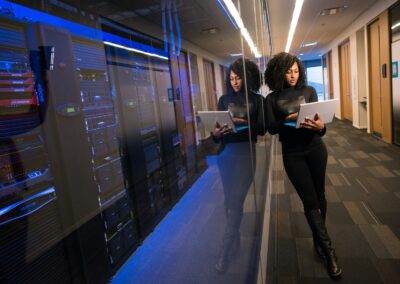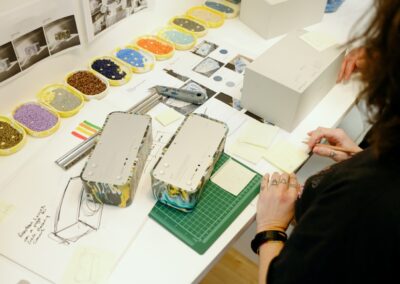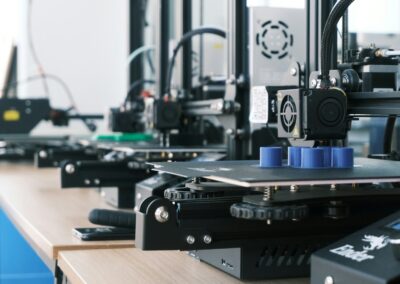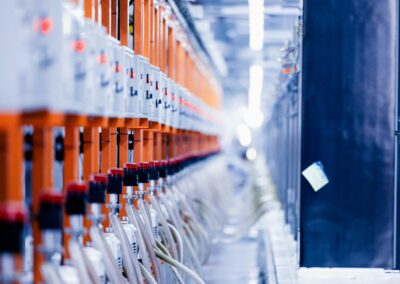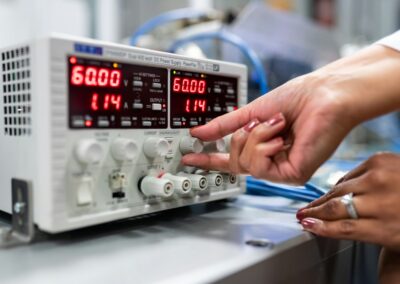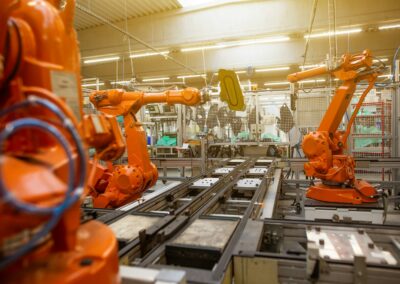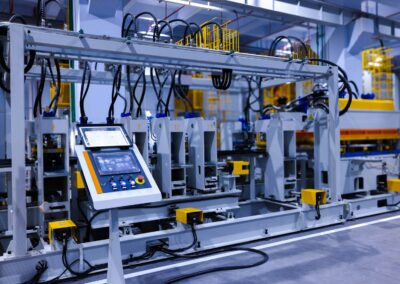Transforming Production Lines with Virtual Replicas
Understanding Digital Twins in Manufacturing
Digital twins for manufacturing represent a groundbreaking advancement in production technology. These virtual replicas of physical production lines enable manufacturers to monitor and control their operations remotely. By integrating digital twins into their processes, companies can achieve unprecedented levels of efficiency, flexibility, and insight into their production systems.
In regions like Saudi Arabia and the UAE, where industrial innovation is a priority, the adoption of digital twins is rapidly gaining traction. For instance, Dubai’s focus on smart manufacturing aligns perfectly with the capabilities of digital twins. By creating accurate virtual models of their production lines, manufacturers in these regions can simulate various scenarios, optimize workflows, and address potential issues before they impact operations.
The core advantage of digital twins lies in their ability to provide real-time data and insights. Through sensors and IoT devices, these virtual models capture data from physical assets, allowing for continuous monitoring and analysis. This integration enables manufacturers to anticipate problems, streamline maintenance, and enhance overall production efficiency.
Benefits of Virtual Replicas in Production Management
The deployment of digital twins offers several compelling benefits for production management. Firstly, virtual replicas facilitate remote monitoring and control, which is crucial for maintaining operational efficiency. Manufacturers can oversee production lines from any location, making it easier to manage operations, diagnose issues, and implement corrective actions without being physically present.
Moreover, digital twins enable predictive maintenance by analyzing data from the virtual model to forecast potential equipment failures. This proactive approach helps in scheduling maintenance activities at optimal times, thereby reducing unexpected downtimes and extending the lifespan of machinery. For example, in Riyadh, companies have leveraged digital twins to predict wear and tear on critical equipment, leading to more informed maintenance schedules and reduced operational disruptions.
Another significant benefit is the ability to test and optimize production processes through simulations. Manufacturers can experiment with different scenarios in the virtual environment to identify the most efficient workflows, resource allocations, and process improvements. This capability is particularly valuable in high-stakes industries where efficiency and precision are paramount.
Case Studies: Digital Twins in Saudi Arabia and the UAE
The impact of digital twins on manufacturing efficiency is evident in various success stories across Saudi Arabia and the UAE. In Dubai, a leading electronics manufacturer has utilized digital twins to enhance its production capabilities. By creating a virtual replica of their assembly line, the company has optimized its processes, reduced waste, and improved product quality.
Similarly, in Saudi Arabia, a major petrochemical company has implemented digital twins to manage its complex production facilities. The virtual models have enabled the company to monitor real-time data from its production lines, predict equipment failures, and optimize maintenance schedules. This approach has resulted in significant cost savings and operational improvements, showcasing the transformative potential of digital twins in the industrial sector.
These case studies highlight the versatility and effectiveness of digital twins in various manufacturing contexts. By adopting this technology, companies in the region can achieve higher levels of operational excellence and maintain a competitive edge in the global market.
Challenges and Considerations for Implementing Digital Twins
Addressing Integration and Data Security
While the benefits of digital twins for manufacturing are substantial, there are challenges to consider. One of the primary challenges is integrating digital twins with existing manufacturing systems. Ensuring compatibility between digital twins and legacy systems requires careful planning and execution. Manufacturers must address potential interoperability issues to achieve a seamless integration that enhances rather than disrupts their operations.
Data security is another critical consideration. The vast amount of data generated by digital twins must be protected against unauthorized access and cyber threats. Implementing robust cybersecurity measures is essential to safeguard sensitive information and maintain the integrity of the virtual models. Manufacturers should invest in advanced security protocols and continuously monitor their systems to mitigate potential risks.
Additionally, the successful implementation of digital twins requires a skilled workforce capable of managing and interpreting the data. Companies need to provide training and development programs to ensure their employees have the necessary expertise to utilize digital twin technology effectively. This investment in human capital is crucial for maximizing the benefits of digital twins and achieving long-term success.
Future Trends and Opportunities in Digital Twins
The future of digital twins in manufacturing is bright, with several emerging trends and opportunities on the horizon. The integration of artificial intelligence (AI) and machine learning (ML) with digital twins is expected to further enhance their capabilities. AI and ML algorithms can analyze complex data patterns and provide deeper insights into production processes, leading to more accurate predictions and optimizations.
Additionally, the expansion of digital twins into new sectors and applications presents exciting opportunities. For example, the use of digital twins in supply chain management and logistics is gaining traction, allowing companies to optimize their entire supply chain networks and improve overall efficiency.
As technology continues to evolve, digital twins will play an increasingly important role in shaping the future of manufacturing. Companies that embrace this technology will be well-positioned to achieve greater operational efficiency, innovation, and competitiveness in the global market.
In conclusion, digital twins for manufacturing represent a significant advancement in production technology. By creating virtual replicas of production lines, manufacturers can enhance remote monitoring, predictive maintenance, and process optimization. While challenges such as integration and data security must be addressed, the benefits of digital twins are clear. As technology continues to advance, digital twins will play a crucial role in driving the future of manufacturing and achieving operational excellence.
—
#DigitalTwins #ManufacturingTechnology #VirtualReplicas #RemoteMonitoring #ProductionLineManagement #SaudiArabiaTechnology #UAEIndustrialInnovation #RiyadhDigitalTransformation #DubaiSmartManufacturing





